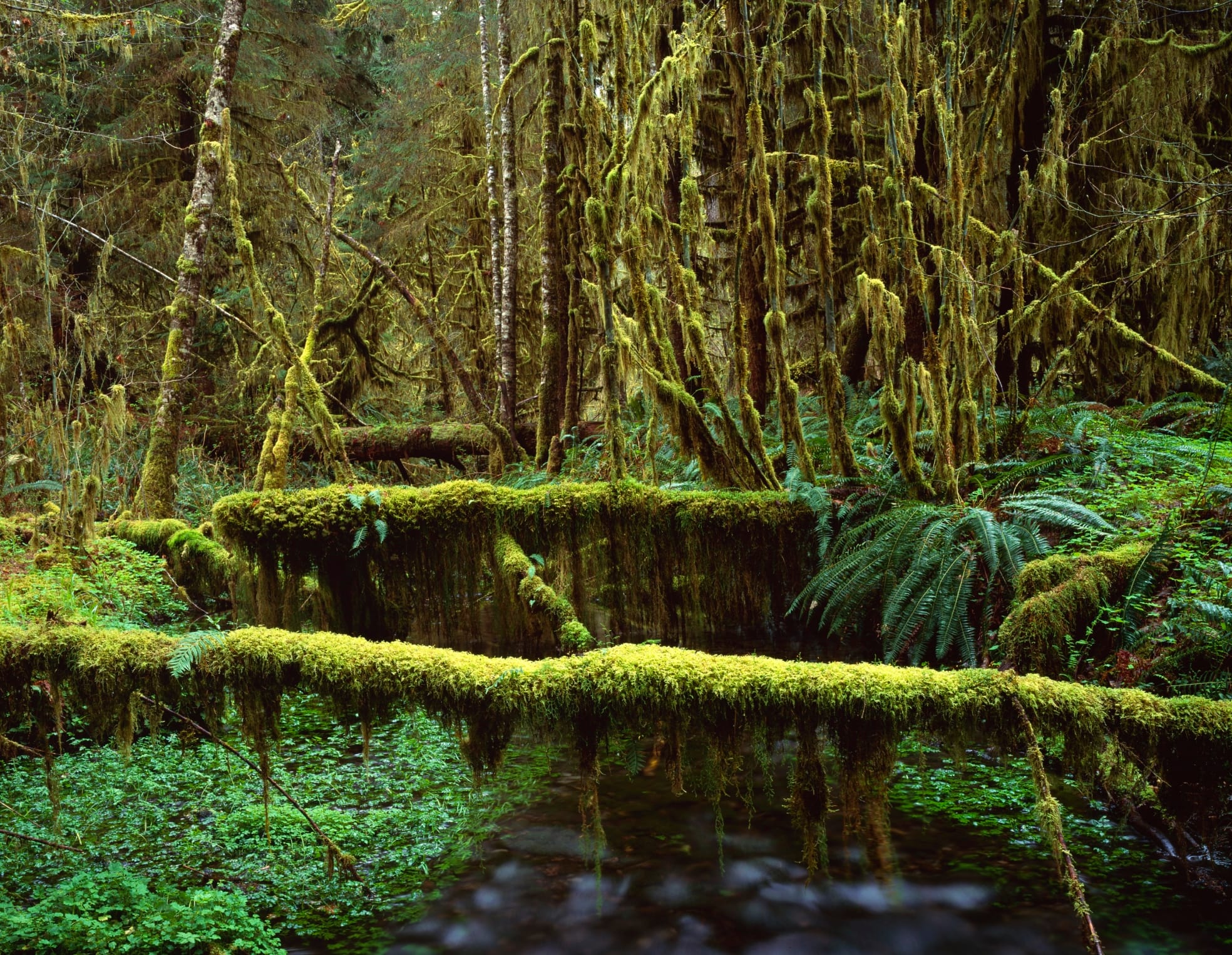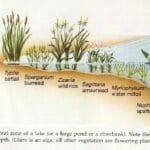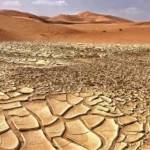Have you ever wondered what lies beneath the towering trees in our forests? It’s like a whole other world down there, known as the understory layer. This hidden realm teems with life and secrets just waiting to be discovered. Join us as we venture into this fascinating and essential part of our forests, uncovering the unseen wonders that make the understory tick.
Facts About the Understory Layer
When you walk through a forest and feel a sense of awe looking up at the towering trees, you’re seeing the canopy. But did you know there’s a whole other world happening beneath it? Welcome to the understory layer – a hidden kingdom full of life and intrigue!
More Than Just Shade
The understory isn’t just some dark and gloomy space forgotten by the sun. It’s more like a thriving city, buzzing with plants and animals uniquely adapted to this environment. The canopy acts as a giant filter, letting in just enough sunlight to create a cool, damp atmosphere below. This might sound a bit gloomy, but it’s a haven for a whole host of creatures who thrive in these conditions.
Plants That Get Creative
You might be wondering how plants survive with so little sunlight. Well, understory plants are masters of adaptation, having developed some impressive tricks to soak up every bit of light they can. Many have large leaves that act like solar panels, maximizing their sunlight absorption. Others have bright, colorful flowers that emit powerful scents. Why? To attract pollinators like bees and butterflies, of course! It’s a mutually beneficial relationship – the plants get to reproduce, and the pollinators get a tasty meal.
An Animal Haven
The understory isn’t just about plants. It’s a haven for a diverse group of animals, each playing a unique role. Picture stealthy jaguars slinking through the shadows, their spotted coats blending perfectly with the dappled light. Imagine colorful frogs and salamanders seeking refuge in the moist undergrowth. And let’s not forget the insects! From buzzing bees to fluttering butterflies, they pollinate plants and are the lifeblood of the understory, keeping the ecosystem in balance. Look closely, and you might even spot some epiphytes – those fascinating plants that grow directly on tree trunks and branches, adding a touch of green artistry to the understory scenery.
The Understory’s Big Impact
The understory might seem like a hidden world, but it plays a vital role in keeping our forests healthy, acting as the forest’s unsung hero. It functions like a giant sponge, soaking up rainwater and preventing erosion. Its plants and decaying leaves release nutrients back into the soil, nourishing the entire ecosystem. It even helps combat climate change by absorbing carbon dioxide from the atmosphere!
Scientists are still unraveling all the mysteries of the understory. They’re constantly discovering new species and learning more about the complex relationships between the plants and animals that call it home. One thing’s for sure: the understory is a fascinating and important part of our planet’s biodiversity, and it’s up to us to protect it.
What are the facts about understory plants?
We’ve discussed the challenges understory plants face, but how do they actually thrive in such a demanding environment? It’s all about adaptation! Imagine trying to catch crumbs falling off a table; that’s what it’s like for these plants trying to grab sunlight. To cope, they’ve developed some remarkable tricks.
One of the most noticeable adaptations is their leaves. Unlike the smaller leaves of plants that enjoy full sun, understory plants often have large, broad leaves that act like giant solar panels, soaking up every bit of available light. And their flowers? They’re not going for vibrant reds or yellows. Instead, they’ve evolved paler shades that stand out more against the dark backdrop, attracting the few pollinators buzzing around down there.
Think of the understory as the bustling market district of the rainforest. It may not be the most glamorous spot, but it’s absolutely essential. Down there, you’ll find a mix of characters: young trees waiting for their chance to reach the canopy, shrubs, ferns, vines, and even the occasional banana plant. It’s teeming with life, offering food and shelter to countless rainforest inhabitants.
It’s not just the little guys, either. Don’t let the shady conditions fool you – the understory is home to some of the rainforest’s most iconic creatures. Jaguars, known for their stealth, use the dense foliage to their advantage when hunting. And boa constrictors? They find the understory perfect for ambushing unsuspecting prey. But don’t worry, it’s not all about the predators! The understory also supports a huge diversity of insects and amphibians, each playing a vital role in this complex ecosystem.
Key Takeaways:
- To make the most of limited sunlight, understory plants have developed larger leaves and paler flowers. It’s like they’ve learned to thrive in the shadows!
- While they may not have it easy, understory plants are the backbone of the rainforest ecosystem. They’re the primary food source and provide crucial shelter for a wide range of animals.
- The understory is like a hidden world, home to a surprising variety of animals, from tiny insects to powerful predators like jaguars.
Experts are still uncovering the secrets of the understory, with ongoing research continually revealing new species and interactions. This highlights the dynamic nature of scientific understanding, reminding us that there’s always more to discover about these fascinating ecosystems.
Who Lives in the Understory Layer?
Stepping into a rainforest, you’re immediately struck by the towering trees forming a majestic canopy overhead. But what about the world hidden beneath those leafy giants? That’s where the understory layer unfolds—a realm teeming with life that’s as fascinating as it is vital to the rainforest’s health.
Think of the understory as a bustling city with its own unique residents. You’ve got your insects, those tiny but mighty creatures that are everywhere! They’re like the city’s workforce, buzzing around, pollinating plants, and becoming a vital food source for many other animals.
Then there are the stealthy types – geckos and monitors. These masters of disguise blend seamlessly into the foliage, always on the lookout for their next meal. You might not even spot them, but they’re definitely there, playing their part in the delicate balance of the understory.
But it’s not just the little guys that call the understory home. Venture a little deeper, and you might catch a glimpse of something bigger. Monkeys, for example, treat the understory branches like their own personal jungle gym, swinging and chattering their way through the trees. And keep an ear out for the soft clicks of bats as they use echolocation to navigate the shadowy paths between the leaves.
Down on the forest floor, things get even more intriguing. Lizards and snakes, masters of stealth, slither through the undergrowth, their senses on high alert for any movement. And the air is filled with the croaking symphony of frogs, adding a whole other layer of sound to this vibrant world.
But how do all these creatures thrive in the understory’s unique environment? Well, they’ve had to get creative! Insects, for instance, with their tough exoskeletons, are practically built for the humid understory conditions. And remember those camouflaged geckos and monitors? That’s their secret weapon for both avoiding predators and sneaking up on their prey.
Even larger animals have developed amazing adaptations for understory life. Monkeys rely on their incredible agility to navigate the branches and escape danger. Bats, on the other hand, have evolved echolocation, using sound to “see” in the darkness. Lizards and snakes depend on their lightning-fast reflexes and keen senses for hunting. And those croaking frogs? Their skin is specially adapted to absorb moisture from the air, which is essential in this humid environment.
The understory is a testament to nature’s creativity, showcasing the amazing adaptations that allow life to flourish even in the shadows of the rainforest canopy. It’s a world of constant discovery, where scientists are still uncovering new species and unlocking the secrets of this complex ecosystem. So, next time you think of a rainforest, don’t just picture those towering trees. Remember the bustling world of the understory below—a place just as crucial and teeming with even more wonders waiting to be discovered.
How Much Light Does the Understory Layer Get?
We’ve talked about the towering trees that form the rainforest canopy, but what about the world beneath them? It’s like stepping into a shadowy, secret garden where the sun’s rays struggle to reach the ground. This is the understory layer, and it’s a whole different world down there!
Think of it this way: if the sunshine were a delicious cake, the canopy trees would be gobbling up most of it, leaving just a few crumbs for the understory. Scientists estimate that only about 5-10% of the sunlight actually makes it through that thick ceiling of leaves!
This lack of direct sunlight creates a unique environment. It’s noticeably dimmer, of course, but the air also feels thicker and more humid. That’s because all the plants and the soil below are constantly releasing moisture into the air.
You might think this lack of light would make it a barren place, but you’d be wrong! The understory is bursting with life; it’s just adapted to thrive in the shade.
Plants Getting Creative
Plants in the understory have learned some pretty clever tricks to survive with limited sunlight. Many have developed large leaves, like solar panels, to capture as much of that precious light as possible. Others have taken a different route, developing flowers with vibrant colors and intoxicating scents. This is their way of standing out in the dim light and attracting pollinators like insects and birds.
Animals Playing Hide and Seek
The understory is also home to a fascinating array of animals, each with its own way of navigating the low-light conditions. You’ll find insects that rely more on smell or touch to find food and mates. Reptiles and amphibians have mastered the art of camouflage, blending seamlessly with the forest floor to avoid predators – or to surprise their prey!
The Understory’s Big Role
The understory might be hidden, but it plays a crucial role in keeping the entire rainforest healthy. It’s a vital food source and hiding place for countless animals, contributing to the incredible biodiversity that rainforests are known for. The understory also acts like a giant sponge, soaking up rainwater and helping to prevent soil erosion – kind of like a natural flood barrier!
Challenges in the Shade
Sadly, the understory, like many ecosystems around the world, is facing threats. Deforestation, where these precious forests are cut down, is a major problem. It’s not just about losing the trees; it’s about disrupting this delicate ecosystem that relies on shade and balance. Climate change is another challenge, as shifts in temperature and rainfall patterns can throw the understory off balance.
Scientists are hard at work studying the understory, working to understand its secrets and how best to protect it. There are still many unanswered questions, but one thing is clear: this hidden world is an essential part of our planet’s health, and it’s up to us to ensure its survival for generations to come.
How Tall is the Understory Layer?
Okay, so we’ve talked about the forest floor. Now let’s journey up a bit to the understory layer. Imagine this: you’re walking through a dense forest, the ground covered in ferns and fallen leaves. You look up, and while you can see glimpses of the sky through the towering trees, there’s a whole other world unfolding between the ground and those high branches. That’s the understory!
Think of it like this: if the forest floor is the basement and the canopy is the roof, the understory is like the living room of the forest. It’s usually somewhere between knee-high and about 20 feet tall, depending on the type of forest. Picture a basketball hoop – that’s roughly the maximum height you’d expect for a really tall understory. In places like rainforests, where the trees grow exceptionally tall and create a dense canopy, the understory might reach that height. But in other forests, like those found in temperate climates, the understory might top out at a height closer to that of an average one-story house.
What determines this height? It’s all about access to sunlight!
You see, the canopy above hogs most of the sunlight. Only about 5-10% of those bright rays actually make it down to the understory. This means the plants down there have had to get creative! You’ll find shrubs, ferns, small trees – all kinds of plants that have adapted to living in the shade. Some plants even have larger leaves to soak up as much sunshine as they can. It’s pretty amazing how they’ve found ways to thrive with limited light.
And the animals? Oh, there’s a whole community living in this “twilight zone” of the forest! The understory provides excellent cover from predators, cool shade from the heat, and plenty of yummy insects and berries to munch on. Birds build nests here, deer seek refuge, and all sorts of critters scurry around in the undergrowth.
Now, here’s where it gets interesting. Scientists are still uncovering all the secrets of the understory. For example, we’re still learning about how the height of the understory impacts the overall health of the forest. Some experts believe that a taller understory might actually help protect the forest from climate change impacts by storing more carbon.
So, the next time you’re lucky enough to be in a forest, take a moment to appreciate the understory. It’s a hidden world teeming with life, and it plays a vital role in keeping our forests healthy.
What are three facts about the understory layer?
We’ve talked about the rainforest canopy before, that breathtaking ceiling of leaves way up high. But what about the world beneath it? Let’s dive into the understory layer, a place humming with life and hidden wonders.
1. A World of Shade-Loving Champions
Imagine only getting scraps of sunlight – about 5%, to be exact! That’s the reality for plants in the understory. It’s a pretty dim world down there, but don’t think for a second that it’s barren. Plants in this layer are masters of adaptation. They’ve developed those big, broad leaves to soak up as much light as they possibly can. Some even get creative with their fragrance, releasing alluring scents that attract pollinators in the shadowy light.
2. A Hideout for All Sorts of Creatures
The understory is like a bustling city, full of life going about its day. Jaguars, those sleek, spotted hunters, use the dense undergrowth as cover while they stalk prey. Amphibians, with their love of damp places, find the perfect conditions amongst the roots and fallen leaves. And then there are the insects! Countless species buzz and flit through this layer, adding splashes of color and keeping the ecosystem in balance.
3. An Unsung Hero of the Rainforest
The understory might be hidden beneath the canopy, but it’s far from being unimportant. Think of it as the lungs of the rainforest. All those plants are working hard, absorbing carbon dioxide and releasing oxygen. Plus, the understory acts like a giant sponge, soaking up rainfall and slowly releasing it. This helps prevent flooding and ensures a steady supply of water for the entire forest.
Exploring the understory is like stepping into a secret world, full of fascinating adaptations and vital ecological processes. It’s a powerful reminder that even in the darkest corners, life finds a way to thrive.
What are the things in the understory?
Picking up from our exploration of the forest layers, let’s delve deeper into the often-overlooked realm beneath the canopy – the understory. Imagine this: You’re strolling through a dense forest, sunlight dappling the forest floor through the leaves above. You’re surrounded by a world teeming with life, but it’s not all towering trees. This hidden world, the understory, is like a bustling city with its own unique residents and stories to tell.
A World of Adaptable Inhabitants
The understory is like a giant jigsaw puzzle, with each plant and animal fitting perfectly into its niche. Since sunlight is scarce down here, plants have developed some clever tricks. Some boast large leaves, acting like solar panels to soak up every precious ray of light that filters through the canopy. It’s a constant competition for resources, and those who can adapt, survive.
Who Calls the Understory Home?
Think of the understory as an apartment building with diverse tenants. You’ve got your:
- Shrubs: These woody plants are like the building’s framework, providing structure and stability.
- Ferns: With their delicate fronds, they bring a touch of elegance, unfurling in the damp, shaded environment.
- Vines: Like agile climbers, they snake their way up tree trunks, reaching for the elusive sunlight.
- Mosses: These soft, green carpets add a touch of magic, thriving in the humid air.
- Grasses: Adding a dash of simplicity, they often form the building’s foundation.
But it’s not just about the plants! The understory pulsates with the energy of its animal residents, too:
- Insects: From busy ants to dazzling butterflies, they’re the city’s tireless workers and artists.
- Birds: Imagine them as the messengers, flitting through the branches, their songs echoing through the stillness.
- Snakes: These stealthy hunters are like the city’s guardians, keeping things in check.
- Frogs: Masters of camouflage, they blend into the damp undergrowth, their croaking a constant serenade.
- Lizards: These nimble creatures are the city’s acrobats, darting through the foliage with surprising speed.
More Than Meets the Eye
The understory isn’t just a pretty face. It’s a vital organ of the forest, quietly working behind the scenes. It provides food and shelter for countless creatures, playing a crucial role in the circle of life. As leaves decompose on the forest floor, nutrients are released back into the soil, nourishing the very plants that depend on them. It’s a delicate balance, one that scientists are still unraveling.
The Understory Under Threat
Sadly, this hidden world faces growing threats from deforestation and human activities. Just like a city under siege, the understory’s delicate balance can be disrupted, impacting the entire forest ecosystem. Protecting these areas is vital, not just for the plants and animals that call them home but for the health of our planet.
Further Exploration
Want to dive deeper into the mysteries of the understory? Researchers are still uncovering its secrets. Explore the work of organizations like the Rainforest Alliance to understand the ongoing efforts to conserve these vital ecosystems. There’s a whole world waiting to be discovered, right beneath our feet!
Are Understory Trees Tall or Short?
We’ve talked about the amazing world of the understory – that bustling space beneath the forest canopy. But just how tall are the trees there? You might picture towering giants, but the truth is a little different. Most understory trees are pretty short compared to the big guys at the top, usually only reaching somewhere between 10 to 20 feet high. Why so petite? Well, it’s all about adapting to their environment.
Think about it: the forest floor is in the shadows of the canopy, so sunlight is pretty scarce down there. Understory trees have adapted to this low-light situation, and their height is a big part of that.
Now, those shorter heights don’t mean they can’t be resourceful! Many understory trees have these big, broad leaves – kind of like solar panels – to soak up as much of that precious sunlight as possible. Some even have brightly colored flowers that pop in the dimmer light, a clever way to attract pollinators buzzing around.
And speaking of buzzing, the understory is like a bustling city for all sorts of creatures. Insects love the place, and you’ll find amphibians, reptiles, birds, and even mammals hanging out, taking shelter, and finding tasty treats among the trees and fallen leaves. It’s a real biodiversity hotspot!
But the understory isn’t just a pretty face; it’s vital to the whole forest ecosystem. These trees are like nutrient recyclers, taking in nutrients from the soil and then releasing them back into the environment as they shed leaves and decompose. They’re the unsung heroes keeping the forest healthy and thriving.
Unfortunately, the understory often gets overlooked when we talk about conservation. Protecting these shorter trees and the unique environment they create is super important if we want to keep our forests diverse and healthy for years to come.
What are the benefits of the understory?
We’ve already talked about what the understory is, but let’s dive into why it’s so important. Think of the understory as the unsung hero of the forest, quietly working behind the scenes to keep everything running smoothly. It’s a bustling hub of activity, even if it doesn’t always steal the show from the towering trees above.
One of the coolest things about the understory is the sheer variety of life it supports. It’s like a city that never sleeps, with different plants and animals going about their day (and night!). The understory’s comfy temperature, moist air, and filtered sunlight create the perfect environment for all sorts of interesting plants to thrive. You’ll find everything from delicate ferns and vibrant mosses to young trees waiting for their chance to grow tall. This diversity is what makes forests so fascinating – it’s like a giant puzzle where every piece, even the smallest plant, plays a vital role.
But the understory is about more than just good looks. It’s also a master of recycling. Imagine a well-organized composting system but on a much larger scale. As leaves and branches fall from the canopy above, they settle on the understory floor. There, busy decomposers like fungi and bacteria get to work breaking down this organic matter. It’s like nature’s own recycling center, transforming dead stuff into valuable nutrients that enrich the soil. These nutrients are then absorbed by the understory plants, creating a self-sustaining cycle that keeps the entire forest healthy and productive.
And let’s not forget about the animals! The understory is like a giant, natural shelter for all sorts of creatures. Its dense vegetation provides the perfect hiding spots for insects, amphibians, reptiles, and small mammals looking to escape danger, grab a bite to eat, or raise a family. It’s like a bustling neighborhood where everyone has their own niche and role to play.
But the benefits of the understory extend far beyond the forest floor. Remember how we talked about climate change? Well, the understory is a silent warrior in the fight against this global challenge. As plants photosynthesize, they absorb carbon dioxide from the atmosphere. The understory, with its abundance of plant life, acts like a giant sponge, soaking up carbon dioxide and helping to regulate our climate.
Finally, the understory is a goldmine for scientists and nature enthusiasts alike. It’s like a living laboratory, offering endless opportunities to study the intricate relationships between plants and animals. By unraveling the mysteries of the understory, we can gain a deeper understanding of how forests function and how we can protect these vital ecosystems.
There’s still so much to learn about the understory – it’s a field of ongoing research with new discoveries waiting to be made. But one thing is clear: this often-overlooked layer of the forest is essential for maintaining biodiversity, regulating our climate, and supporting the incredible web of life that thrives beneath the canopy.
Why Do Few Plants Grow in the Understory?
We’ve talked about how the rainforest is like a giant layered cake, right? Well, imagine you’re a tiny plant trying to grow on the bottom layer of that cake. Tough, right? That’s the understory – the area beneath the main canopy of trees – and it’s a tough place for a plant to catch a break.
It’s All About the Sunlight (Or Lack Thereof)
Think about the last time you tried to get a tan on a cloudy day. Pretty difficult, huh? Plants need sunlight to make their food, and in the understory, sunlight is about as common as a winning lottery ticket. The thick canopy of leaves above gobbles up most of the sunlight, leaving very little for the plants below.
Now, some plants have adapted to this shadowy world. They’ve developed these big, broad leaves that act like solar panels, trying to soak up every last photon of light that manages to sneak through. But even these adaptations have their limits.
A Fierce Competition for Everything Else
Sunlight isn’t the only thing in short supply down in the understory. Imagine trying to eat at a buffet where everyone’s hungrier than you. That’s what it’s like competing for water and nutrients in this environment.
The giant trees above have first dibs on all the good stuff, leaving the little guys scrambling for leftovers. Plus, the soil in the understory isn’t exactly a five-star restaurant for plants. The thick layer of decomposing leaves makes it hard for water and nutrients to reach the soil, leaving the understory with rather bland options on the menu.
Scientists Are Still Uncovering the Mysteries
We’re learning more about the understory every day, but there are still plenty of mysteries to uncover. For example, some scientists believe that the types of plants that can grow in the understory might be affected by the specific types of trees in the canopy above. Others are studying how changes in the environment, like deforestation or climate change, might impact this delicate ecosystem.
So, the next time you see a picture of a lush rainforest, remember that beneath the surface lies a hidden world of struggle and adaptation. It’s a constant battle for survival in the understory, and only the toughest and most resourceful plants can make it.
What are 3 animals that live in the understory?
We’ve already explored the rainforest’s towering giants and the sun-drenched canopy, but what about the world beneath our feet? The understory is like a secret garden, a world of dappled sunlight and tangled vegetation. It might be darker and more humid down here, but it teems with life, and some pretty incredible animals call it home.
Think about the jaguar, one of the Americas’ most powerful hunters. These aren’t just jungle cats; they’re masters of camouflage. Their spotted coats blend seamlessly with the understory’s shadows, allowing them to stalk prey unseen. You might not even know they’re there until it’s too late!
Speaking of blending in, the understory is also home to various snakes. Now, before you get nervous, remember that most snakes aren’t out to hurt humans. They’re more interested in rodents and other small creatures that also live in the understory. Still, from the enormous boa constrictor to the vibrantly colored but venomous coral snake, these reptiles are a vital part of the ecosystem.
But it’s not all stealth and scales down here. The understory is also a place of delicate beauty, thanks to the presence of countless butterflies. Their brightly colored wings flitting through the shadows bring to mind living jewels, and they play a crucial role in the rainforest’s health by pollinating flowers.
It’s important to remember that these are just a few examples of the amazing animals that live in the understory. Ongoing research is constantly revealing new species and interactions, reminding us how much we have yet to learn about this hidden world.
| Animal | Description | Role in the Ecosystem |
|---|---|---|
| Jaguar | Spotted coat, powerful hunter | Apex predator |
| Snake | Varied species, some venomous, some constrictors | Predator, prey regulation |
| Butterfly | Colorful wings, pollinators | Pollination, prey for some |
Unveiling the mysteries of the sacred Catholic artifact, delve into the fascinating facts about the monstrance. Embark on a breathtaking journey to the icy wonderland of Argentina and discover the captivating facts about the Perito Moreno Glacier.
















